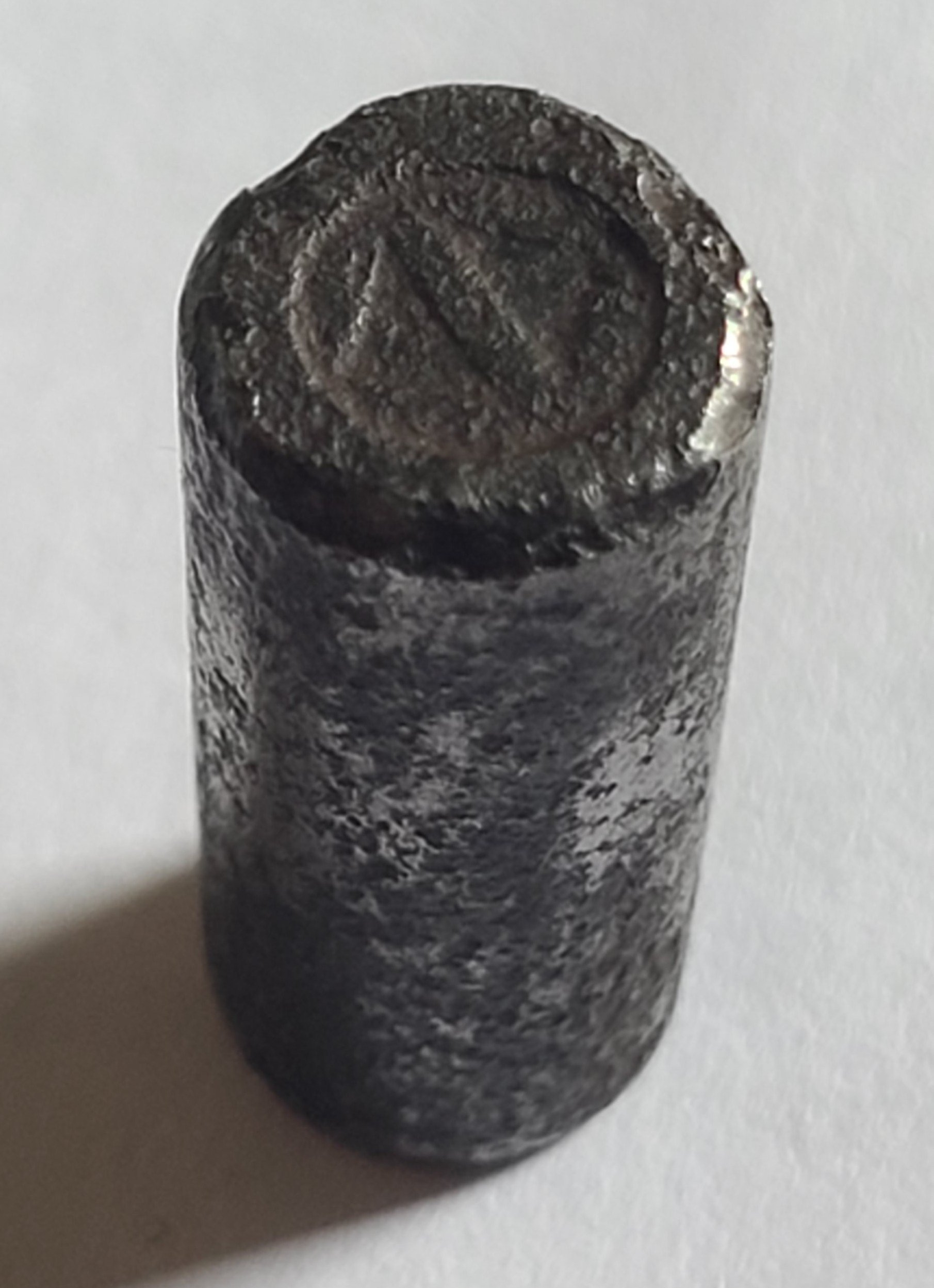No detectable amount of tritium has been found in fish samples taken from waters near the crippled Fukushima No. 1 nuclear plant, where the discharge of treated radioactive water into the sea began a month ago, the government said Monday.
Tritium was not detected in the latest sample of two olive flounders caught Sunday, the Fisheries Agency said on its website. The agency has provided almost daily updates since the start of the water release, in a bid to dispel harmful rumors both domestically and internationally about its environmental impact.
The results of the first collected samples were published Aug. 9, before the discharge of treated water from the complex commenced on Aug. 24. The water had been used to cool melted nuclear fuel at the plant but has undergone a treatment process that removes most radionuclides except tritium.
ignorance and paranoia about radioactivity go hand in hand.
i know so many otherwise smart people who lose it on this issue. because they just think any radioactivity = destroy planet forever . completely ignorant to how it actually works, and just think every power plant must eventually chernobyl and that one barrel of nuclear waste is enough to destroy 1000s of miles or something equally absurd.
totally sad.
I think most reasonable objections to this were that they would be unable to filter out the actual bioaccumulating radioisotopes from the water and it should’ve been kept in retention. In the end you either trust they will or not. I trust they will.
I don’t understand why people think concentrating it and keeping large quantities on-site is preferable to heavily diluting and releasing it. A giant vat of radioactive water sounds like another disaster waiting to happen.
Because they don’t believe that they’ve removed the heavy metals that end up in the food web and sitting in the littoral area seabed until it’s picked up by lifeforms again. Tritium dilutes, but fission products do not.
Water eats beta- and even alpha particles in a small radius. Ionized water even more so.
The sea is vast. A pond is but a drop to the sea.
It wasn’t a decision to be taken lightly, but it was a good gamble.
Nobody’s particularly concerned about the actual radiation of the tritium. It’s just that it is actively picked up by your body and used like any other water with the same biological half life of water at 7 days. It can cause some problems in that time. It’s not really a problem of it getting integrated into anything, since all it’ll do is knock itself off of and destroy whatever it gets incorporated into when it decays.
Yet one litre of oil can contaminate over a million litres of water.
I talked about how water released are usually modeled and risk assessments done in another comment abour the pending release a few weeks ago but I can’t find it.
While I can’t speak for all regulatory bodies, and you could be a shitass and release toxic crap without doing a risk assesmsent, it’s very unlikely that this is the case here, particularly because it’s TREATED water that’s being released. That means they have a treatment system (there’s a fucking rabbit hole and half…) which they are using to treat the water to some acceptable criteria/standard. This mean some sort of modeling and risk calculation has been done otherwise they would have just gone ‘yolo pump the water into the ocean’.
Tritium isn’t toxic, it’s mildly radioactive.
I’ll trust the nuclear scientists that say that the release is safe, but there should be a transparent international panel, including China which has concerns about the release into fishing waters, that is given access to conduct their own tests with all parties agreeing to release their findings.
china is causing a fuss for political gain. a huge chunk of their fishing practices are illegal and violates international law anyway. their concern is theatrics to drum up their anti-japanese nationalism.
Not only that, but China’s Fuqing power plant also releases 3 times more tritium into the Pacific than the Fukushima plant so they’re also full of shit.
I’m not doubting you at all, but can you provide a link for emphasis?
It’s a pressurized water plant like Fukishima was. Not quite 3x but still more than 2. Qinshan is a CANDU reactor, so that’s why its 10 times more than what they’re annually releasing from Fukishma. They release a lot of tritium because they use heavy water as a moderator. Any nuke plant that has a Lithium channel for producing tritium for nuclear weapons will also, of course, release a lot of it comparatively.
Thank you for the link.
Candu are designed to be messy, but the Canadians keep them clean(ish) somehow, never understood how, guess they just watched how much enrichment waste they burned, or they were just careful in reclaiming the tritium, it’s expensive after all.
The old “trust but verify” position. Agreed 100%. If everything is perfectly safe there should be no reason not to have multiple independent, third-parties with no skin in the game to verify. This is good for everyone as it reassures the fishermen, those buying fish, and really the rest of the world.
Is somebody preventing them from catching and testing fish?
I remember commenting on a post where China condemned Japan for doing this.
I asked ppl there “is this actually bad or is this kind of par for the course of getting rid of the dangers left behind in Fukushima?” And most of them were like “it’s not a common occurrence but it’s not inherently dangerous and it’s not that big of a deal”
To me it looks like the vast majority of objections to this came from strategic propaganda related to domestic relations of China and/or other nations.
Its also classic anti-nuclear power FUD.
I don’t doubt nuclear power works. I just know how humans work. Everything we build we also destroy. Let’s not take the planet with us.
If their reporting of the quantity of tritium is accurate, India’s candu style plants release more incidentally than this will.
Which is what the experts have been saying since the beginning, but the anti-nuclear propagandists explicitly ignore the experts.
Probably because the octopuses used it all for their science experiments. It’s a scientific fact that octopuses hoard tritium. Source: Spider-man 2.
Unsurprising.
Fantastic news! so many people are so afraid of the word "nuclear", and don't understand how large of a volume the ocean is. the lethal dose of Fentanyl is like the size of a grain of rice. Put all of the known legal and illegal volume of fentanyl into the ocean and it would be undetectable.
Sample size: 64
Also, are there other things like Caesium-137 that pose a risk?
Not really. This video by Kyle Hill does an amazing job at explaining it.
Here is an alternative Piped link(s):
Piped is a privacy-respecting open-source alternative frontend to YouTube.
I’m open-source; check me out at GitHub.
Cs-137 and other fission and activation products can be largely removed by treatment. H-3 is a bit trickier since it literally is part of the water. Luckily it’s a fairly weak beta emitter with a relatively short half life so causes very, very little long term harm.
Dangit, now how am I gonna get my piscine superpowers/fish shaped tumors?
deleted by creator
Too bad the whole nuclear life cycle involves extraction, refinement, transportation, and yes the small slice of the cycle where it's used on the sub, then removal, and waste management (a misnomer since there still isnt any really in a lot of cases). And that whole long chain isn't nearly as concise and clear cut, and safe as looking at just the small slice of time spent on the sub.
You were downvoted because you told the truth about nuclear power, not because people thought you were responding to a question that wasn’t asked.
They were downvoted for telling a half truth. Technically true, but ignoring the context that makes it a good thing. Sure, it needs to be extracted, refined, and (to be clean) contained. All energy sources need the same, except dirty energy at least doesn’t contain their waste.
deleted by creator
If you have 100x emissions, but 1000x the efficiency of the fuel (numbers may be overblown), then it’s still better for the environment.
Nuclear waste is probably the biggest issue, as we have to take care of the storage site.
However, we could always either repurpose it or yeet it into space, away from any other close planet collision course.
While yeeting things into space sounds cool, I am sceptical of the viability of that strategy.
Putting things into space is very expensive and putting them in a solar orbit is even more expensive.
Isn’t nuclear waste also really heavy? And guess what that means, it’s getting more expensive.
It also isn’t very environmentally friendly to send shit into space and of course even less friendly considering how heavy nuclear waste is.
In my opinion, they should find a nice, stable continental plate and in the middle of that, drill some relatively small diameter boreholes. Drill them ten or twenty kilometres apart to a depth that exercises our current technology, drop sealed waste into the bottom of said holes, top them off to 200m below the surface with concrete, and then backfill the rest with dirt.
After that, remove all evidence of anything ever being there on the surface.
If you have the technology to drill a hole 3-4km deep then you have also the tech to detect radioactive material.
Small diameter boreholes that kind of distance apart are basically undetectable by geophysical survey with our current technology so nothing in particular would ever be seen.
The quantity of worldwide high level radioactive waste that can’t be reprocessed could easy be disposed of in this manner.
The high tech equivalent of a cat burying their shit. While I like the idea of yeeting stuff into space, this is also beautifully simple.
I remember talks of building places with the use of symbols or other non-linguistic messaging to keep future populations at bay, I think that was in Finland or something.
Happy to pay the bills, Otto
I for one would like to try this “nuclear fish”…preferably crumbed, deep fried and doused in lemon juice. With a serve of fries.
deleted by creator
Why do you specify lefties? Is there something unique about South Korean politics that make their left-wing reject science as much as everyone else’s right-wing?
Anti-nuclear has been mostly a left thing in the US at least despite the clean energy movement including many of the same people.
Uhh… no it hasn’t.
I’m genuinely curious why you think that’s the case.
For people genuinely interested in the nuclear industry, only listening to the cheerleaders and Dunning-Kruger advocates is a bad idea.
Go look at nuclear from extraction of materials, to refining of materials, plant risks and histories of disasters, waste and waste management issues,extraction. (ie There are superfunds sites in Washington state still being cleaned up from WWII bombing materials exteaction.)
Pro nuke shills normally like to just cherry pick a slice of the nuclear energy life cycle to fit confirmation bias and or intentionally do it in bad faith.
Yes Nuclear has a LOT of positive potential, but it's also got significantly higher risks (many magnitudes larger) as the history of disasters, exteaction, and waste management will show you.
This article like a lot of the comments are just pro nuke propaganda. None of these guys have empirical studies on the propagation rate of contamination through the food web for constant regular radioactive dumping. They don't have exhaustive studies on all the vectors by which the contaminates enter the food chain. There has not been nearly enough time since they started dumping to make the assertions being made here, and NO–64 fish is not a large enough sample size… and on and on.
What you're reading here is wishful thinking and either inentional lies, or people who think they know more than they do demonstrating Dunning-Kruger.
Sample size is critical to get a realistic result of the tritium toxicity. In this case, they sampled only two fish! That would not yield a statistically significant result!
Samples of local fish have been collected at two points within a 5-km radius of the discharge outlet, except during rough weather conditions, with the agency announcing its analysis results on an almost daily basis since Aug. 26.
No tritium was detected in 64 fish, which included flounder and six other species, collected since Aug. 8.
I mean… you could have read the article.
I mean, you are correct, it was not two fish. But is 64 fish some sort of good sample size?
Follow up question: does this type of thing accumulate in small fish and then concentrate in larger and larger fish?I mean, you are correct, it was not two fish. But is 64 fish some sort of good sample size?
Given the results, it is significant.
Follow up question: does this type of thing accumulate in small fish and then concentrate in larger and larger fish?
No, tritium is treated by organisms just like normal H2O, bioaccumulation is no problem.
I don’t know the answers to those questions, as I am not a nuclear scientist. But the nuclear scientists seem to think so.
In any case, I think those are good questions. Those are the kind of good questions we get when people read the articles.
I love when people tell on themselves for not knowing a thing about statistics.
Yes, it’s more than enough.
But then they wouldn’t be able to bitch!
they only sampled two fish!
Source?




















